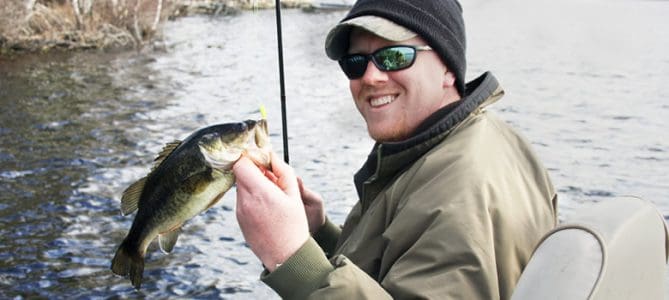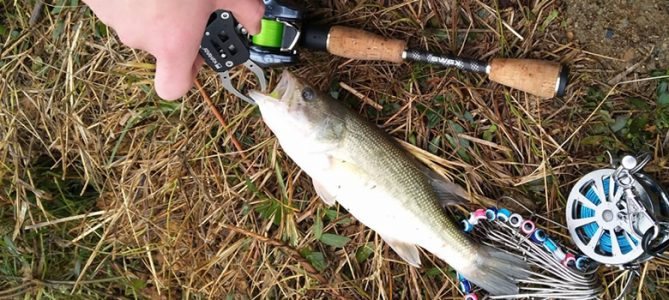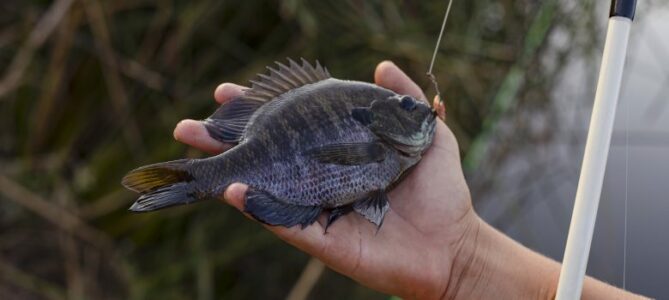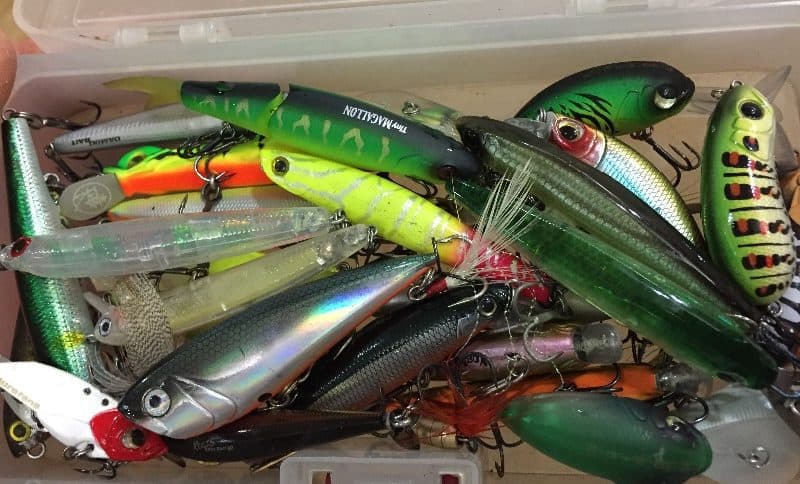If you buy via a link on this page, we may receive a commission, at no extra cost to you.Learn more
There are an infinite number of lures designed for bass fishing, and one that is often asked about is Rooster Tails. Rooster Tails are a type of spinner designed as a multi-species lure, but today we will discuss if these are a practical option for bass.
If you’re at your local shop and wondering if you could catch some bass on Rooster Tail spinners, the answer is yes. Rooster Tails are often used in lakes, rivers, and streams as their spinning motion and vibration mimic the sound and movement of baitfish. Quick retrieval and easy casting make Rooster Tails great for prospecting a lot of water in a small amount of time. Rooster Tails can be used to catch both small and largemouth bass.
Like any other fishing lure, there are variations to fit your location best and tackle. The Rooster Tail spinner comes in 10 different sizes with 100 different patterns, so before you jump into the first Rooster Tail you see, understand which one might be best for you.
Choosing Your Rooster Tail for Bass
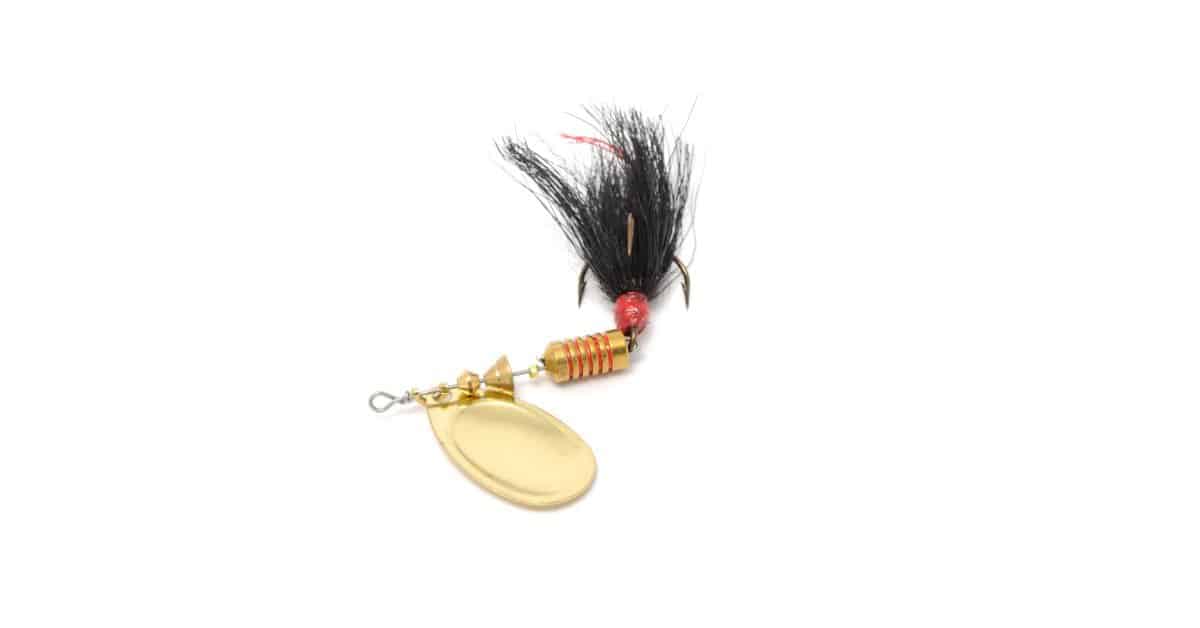
Size
The size of your Rooster Tail will be your first consideration when picking out your lure, and you will have plenty of size options with Rooster Tails. They come in ten different sizes, ranging from 1/32oz. to 1oz., and the best size for bass are 1/8 oz., 1/6oz., and 1/4 oz.
I like to have a range of sizes to fit the area I am fishing in or the habits of the fish. For example, if I notice that fish are not aggressive or I am getting a lot of bumps but need complete takes, I will size down my lure. If I see very aggressive fish, I like to size up, hoping that a bigger bass will take the bigger lure.
Choosing the right size of Rooster Tail will also depend on the characteristics of your water. If you are fishing for smallmouth in a dirty stream receding from recent rainfall, I recommend fishing with a bigger lure they can see or hear. However, if your water is crystal clear and fish are spooking easily, you want to go to the smallest size that will still entice fish.
Color
Rooster Tail offers so many colors that it is overwhelming, but luckily, natural colors are the best route for fishing for bass. Black, white, silver, and olive are great starting places, especially when fishing clear water.
If you are fishing in dirty, murky water, bright colors such as fire tiger, chartreuse, and bright red can be helpful. However, my personal favorite in dirty water is still black, and some studies show fish detect black easier than any other color in dirty water.
The blade’s color is another consideration for bass fishing with a Rooster Tail. I like to carry the two basics: silver and gold. Gold is a great option to provide some flash in dirty, low-light water, while silver retains a natural look for the high light, clearer conditions. By having silver and gold, you will have an arsenal that fits any water or light condition.
Rigging Rooster Tails for Bass
Due to its versatility and uses, there is nothing complicated about tying on a Rooster Tail. You can use it on any rod and reel. If you’re fishing for bass with Rooster Tails, then 6-10lb. The monofilament line will do just fine. Remember, the size of your line will want to match the size of your lure, so if, for whatever reason, you size up or down from our 1/8-1/4 oz. range, then make sure you also go to a lighter or heavier line.
How to Fish Rooster Tails in Lakes
Fishing with Rooster Tails in lakes can be a great way to prospect water with the chance of catching almost any species. If you’re targeting bass, cast your Rooster Tail toward any structure and reel the lure back toward you. As the Rooster Tail’s blade spins, its vibration and flash will attract nearby fish.
Lure Depth
Of course, just because the Rooster Tail is spinning in the water doesn’t mean you will automatically catch fish. While using spinners, I first like to change my lure’s depth if I am unsuccessful. Typically, if I am in the correct depth range, I will see or feel signs of fish- even if that doesn’t include a complete take. To judge my depth, I begin counting as soon as the lure hits the water’s surface at the end of my cast. Depending on the Rooster Tail’s weight, each one-count will represent a particular drop in depth. Play with this nearshore to roughly judge how deep the lure drops for every second you count. If you repeat this with each cast, you will quickly estimate the depth where the fish are active.
Lure Speed
Once I have a consistent sign of fish at a certain depth, I play with my spinner’s speed. The faster you reel a Rooster Tail, the faster it will spin and rise toward the surface. So the trick is to keep the spinner rotating while keeping your lure at the correct depth. As you play with this retrieval rate, you will find that there are Rooster Tails that are more conducive to spinning effectively at a slower speed. This can be a game-changer, as there are times when the bass needs a lethargic lure to play along.
How to Fish Rooster Tails in Rivers/Streams
Fishing Rooster Tails in small rivers and streams can be a blast, especially if you can pinpoint casts toward structure and “fishy” habitat. If you attempt these waters, here are some tips for making it a successful outing.
Which Direction Do I Cast?
Upstream? Downstream? Across the stream? This can feel confusing initially, but consider two general rules to target river bass. First, most fish tend to face upstream in a river. And second, they love finding cover for protection and conserving energy that would otherwise be consumed by swimming against the current.
You can cast any direction with a Rooster Tail while on a river. I prefer targeting structure first. If the structure is downstream, cast toward it and reel slowly back upstream. The upstream current will make the blade spin with a slow retrieval, so there is no need to reel fast. Just be sure to keep some distance from the structure, as the bass’s upstream point of view will cause them to be spooked easily.
My favorite direction to cast is at a 45-degree angle across and upstream. While retrieving the lure, it will naturally sweep down and across the currents to cover a lot of water between the opposite bank and me. You can also cast at a 45-degree angle across and downstream, in which case your lure will end up straight downstream of you. If you do this, let the lure suspend downstream- it will naturally rise from the current and tightened line, enticing bass to bite.
Structure to Target
- River Eddy: If you’re lucky to come across a prominent river eddy, cast your Rooster Tail there! You will notice a river eddy by its swirling characteristic, and it is often located between the bank and any riffle or strong current. This is the perfect place for bass, as food is constantly nearby without expended energy. When casting your Rooster Tail into an eddy, be ready for a bite immediately.
- Trees: Any log or tree submerged in the water will likely hold some bass. The key here is finding the correct angle for casting. Whether fishing from shore or a boat, align yourself with the trunk and reel your Rooster Tail parallel to the log- be ready for a strike!
- Rock Piles: bass prefer rock piles as shallow as two feet deep, even in rivers and streams. Equipment will help you detect this subsurface structure but peek at the shoreline if you’re fishing without equipment. The shoreline’s characteristics indicate the structure below the surface; if a shoreline is rocky, assume that the same rocky structure is below the surface.
Summary
If you’re questioning if Rooster Tails are a worthy purchase for bass fishing, think no more! This versatile lure will entice bass and any other fish ready to bite! A Rooster Tail’s flash, vibration, and hackled body make for the perfect all-around lure that can be cast in any conditions and water.

